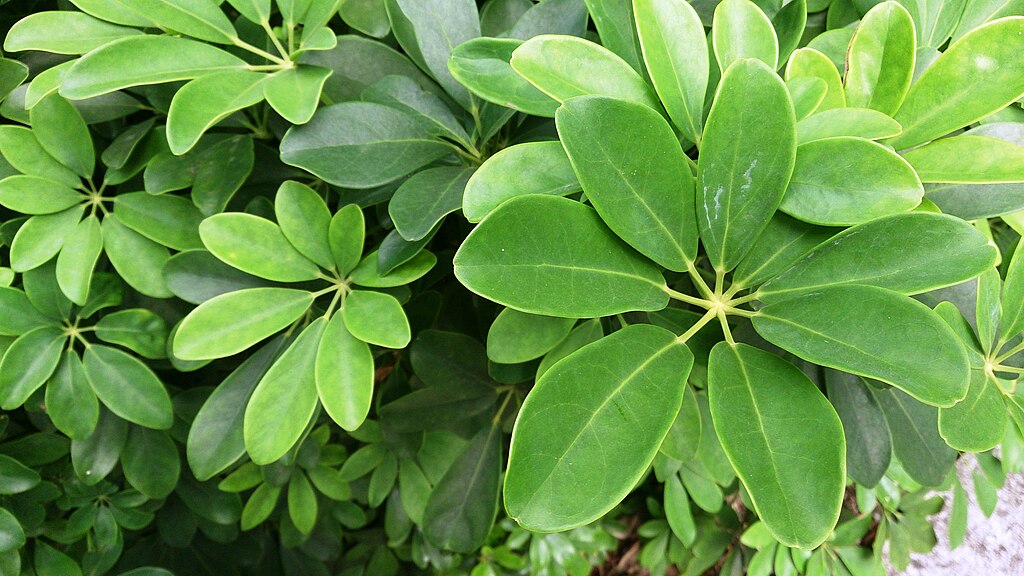
1. Botanical Overview:

- Genus and Species:
- Schefflera is a genus in the Araliaceae family, with over 600 species
- Most commonly grown species:
- Schefflera actinophylla (large, glossy, umbrella-like leaves)
- Schefflera arboricola (smaller leaves, more compact growth)
- Growth Habit:
- Schefflera plants are evergreen shrubs or small trees in their native habitats but are typically grown as houseplants in a bushier, compact form
- Can grow tall (up to 6 feet or more indoors) with long, slender stems and glossy, finger-like leaves
2. Ideal Growing Conditions:
- Light:
- Prefers bright, indirect light but can tolerate some direct sunlight
- Can adapt to lower light conditions, but growth may slow down, and the plant may become leggy
- Avoid placing it in low-light rooms or spaces with no natural light
- Temperature:
- Thrives in temperatures between 60°F and 75°F
- Not frost-tolerant, so it should be kept away from cold drafts and windows during winter months
- Humidity:
- Prefers moderate humidity but can tolerate typical indoor humidity levels
- If humidity is too low, consider using a humidity tray, misting, or a room humidifier to keep the plant happy
- Soil:
- Well-draining potting mix is essential to prevent root rot
- A regular houseplant mix works well, but adding perlite or orchid bark can improve drainage
- Ensure the pot has drainage holes to allow excess water to escape
3. Watering Schefflera:
- Watering Basics:
- Water when the top 1-2 inches of soil are dry to the touch
- Water thoroughly until water drains from the bottom of the pot, but avoid letting the plant sit in standing water
- Signs of Overwatering:
- Yellowing leaves, mushy stems, root rot, or foul-smelling soil
- A constantly wet soil environment can lead to root rot, so it’s important to allow the soil to dry out between waterings
- Signs of Underwatering:
- Wilting, dry soil, and crispy leaf edges or tips
- The leaves may also droop or curl when the plant is thirsty
- Watering Tips:
- Water less frequently in the winter months when the plant’s growth slows down
- Be cautious about overwatering by ensuring the pot has proper drainage and checking the soil moisture level regularly
- Use room-temperature water to avoid shocking the plant’s roots
4. Fertilizing Schefflera:
- When to Fertilize:
- Fertilize during the growing season (spring and summer) once a month
- Reduce or stop fertilizing in the fall and winter when the plant enters its dormant phase
- Type of Fertilizer:
- Use a balanced, water-soluble fertilizer (e.g., 10-10-10) diluted to half strength
- For optimal growth, consider using a fertilizer with higher nitrogen content during the growing season
- How to Fertilize:
- Apply fertilizer when the soil is slightly moist to avoid burning the roots
- Over-fertilizing can lead to leaf burn or weak growth, so use sparingly and only during the growing season
- Signs of Over-Fertilizing:
- Brown or crispy leaf edges, weak growth, or salt build-up in the soil
- If over-fertilized, flush the soil with water to remove excess nutrients
5. Common Issues and How to Solve Them:
- Yellowing Leaves:
- Causes: Overwatering, underwatering, nutrient deficiencies, or pests
- Solutions: Check watering habits, ensure proper drainage, and adjust the light conditions
- Leaf Drop:
- Causes: Environmental stress (sudden temperature changes, drafts), overwatering, or low humidity
- Solutions: Keep the plant in a stable, draft-free area with moderate humidity and avoid sudden temperature fluctuations
- Leggy Growth:
- Causes: Insufficient light or improper pruning
- Solutions: Move the plant to a brighter location and prune back long stems to encourage more bushy growth
- Pests:
- Common pests: Spider mites, mealybugs, aphids, and scale
- Solutions: Inspect the plant regularly, wipe down the leaves, and treat with insecticidal soap or neem oil if pests are found
- Brown Leaf Tips:
- Causes: Low humidity, underwatering, or over-fertilizing
- Solutions: Increase humidity, adjust watering schedule, and use diluted fertilizer
6. Pruning and Maintenance:
- Why Prune Schefflera?
- Pruning helps maintain a compact, bushy shape and encourages new growth
- It also removes any damaged or yellowing leaves
- When to Prune:
- Best done in spring or summer during the growing season, but can be pruned year-round to control size and shape
- How to Prune:
- Use clean, sharp scissors or pruning shears to remove leggy stems or damaged leaves
- Cut just above a node (the small bump where new growth will emerge) to promote branching
- Pinch back growing tips for a fuller, more compact shape
7. Repotting Schefflera:
- When to Repot:
- Repot every 1-2 years or when the plant becomes root-bound or outgrows its pot
- Signs that it’s time to repot: Roots growing out of drainage holes, slow growth, or the plant toppling over due to being too large for its pot
- Best Potting Tips:
- Choose a pot that is 1-2 inches larger in diameter than the current pot
- Ensure the new pot has good drainage to prevent root rot
- Repotting Steps:
- Gently remove the plant from its pot, inspecting the roots for rot or overgrowth
- Trim any damaged or overly long roots before repotting into a fresh pot with new soil
- Water thoroughly after repotting but avoid overwatering during the first week to allow the plant to settle in
8. Propagation of Schefflera:
- How to Propagate:
- Stem Cuttings: The most common method of propagation is through stem cuttings
- Cut a healthy stem with a few leaves and at least one node, then place it in water or moist soil
- Roots will typically form in 2-4 weeks
- Propagation Tips:
- Keep cuttings in a warm, humid environment with bright, indirect light to encourage root growth
- Change the water regularly if propagating in water
- Once roots are developed, transfer the cutting to its own pot with fresh, well-draining soil
9. Benefits of Owning Schefflera:
- Low Maintenance:
- Schefflera is a relatively easy-to-care-for plant that tolerates a range of growing conditions, making it perfect for beginners
- Air Purification:
- Like many houseplants, Schefflera helps purify indoor air by removing toxins such as formaldehyde and benzene
- Aesthetic Appeal:
- Its glossy, green leaves and tree-like shape make Schefflera an attractive addition to any room
- Perfect for both modern and traditional décor styles
10. Fun Facts About Schefflera:
- Symbolism: Schefflera is sometimes referred to as the “Umbrella Plant” because of its large, umbrella-like leaf structure
- Name Origin: The name “Schefflera” is named after the German botanist Johann Peter Scheffler
- Longevity: Schefflera can live for many years with proper care, developing into a tall, impressive houseplant over time
Featured image credit: Mokkie, CC BY-SA 3.0 https://creativecommons.org/licenses/by-sa/3.0, via Wikimedia Commons

